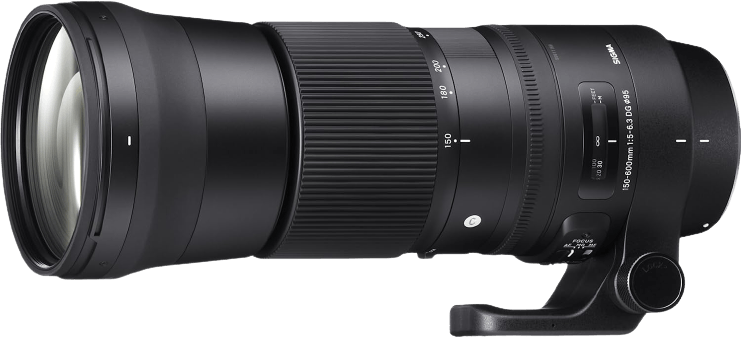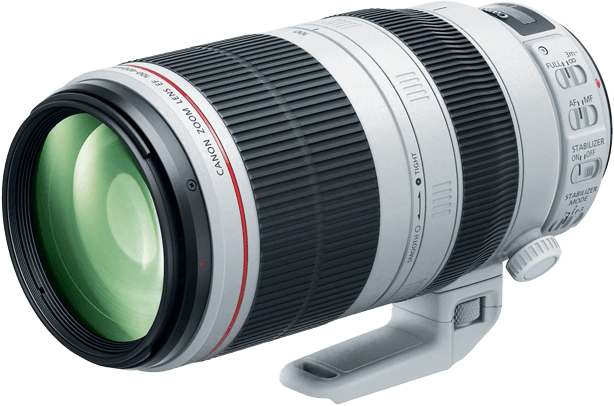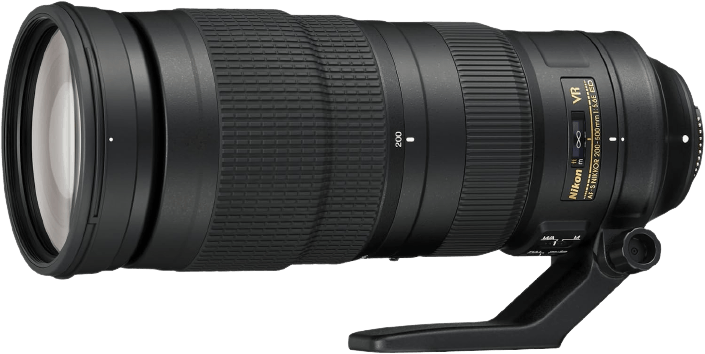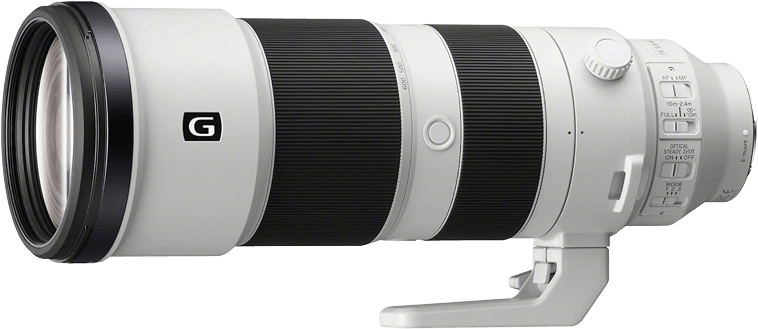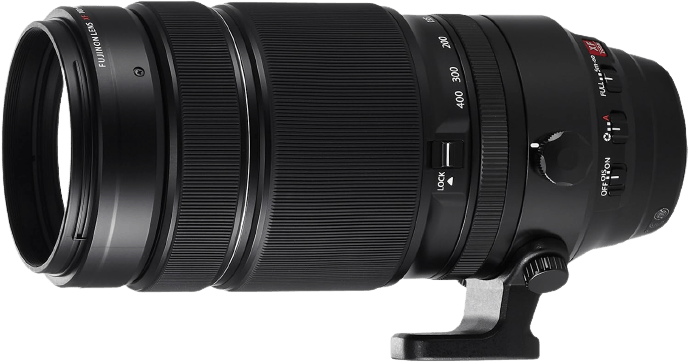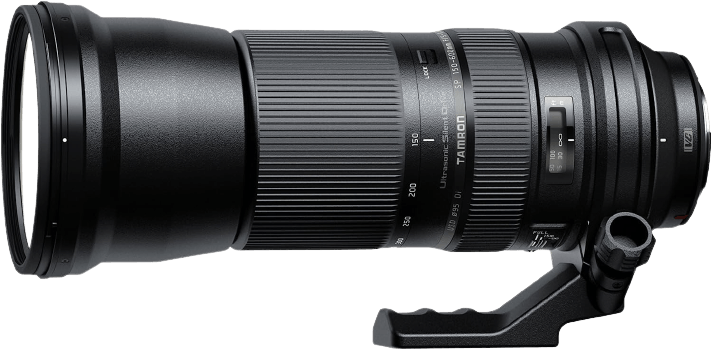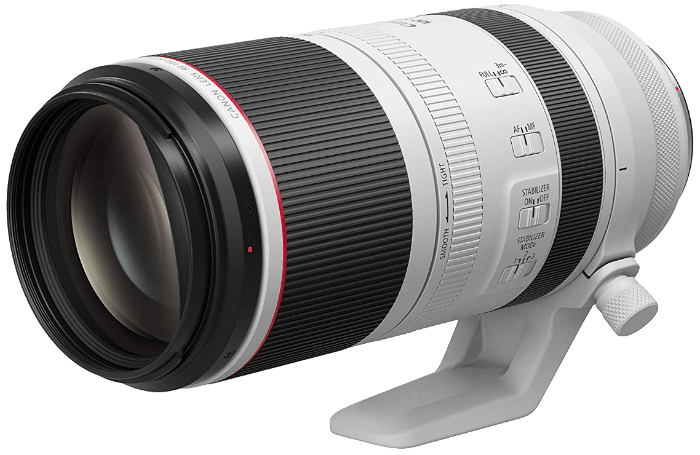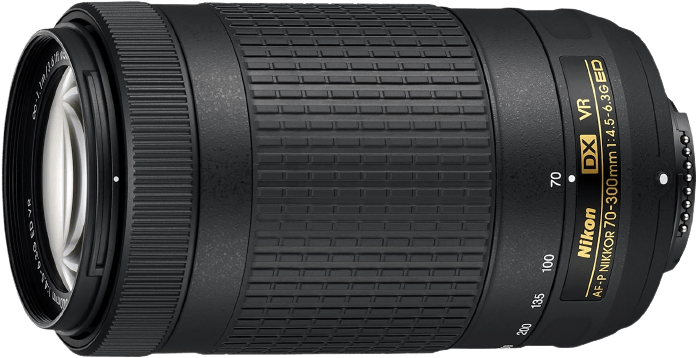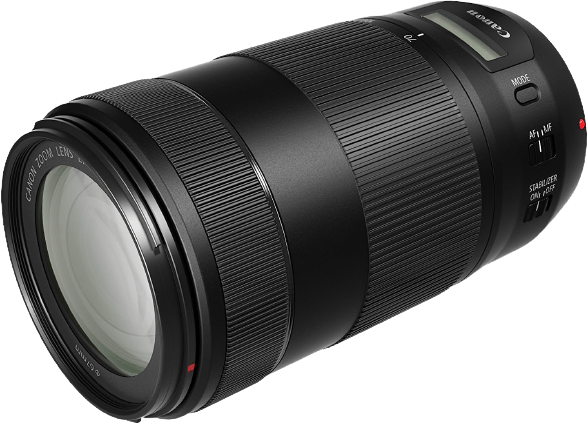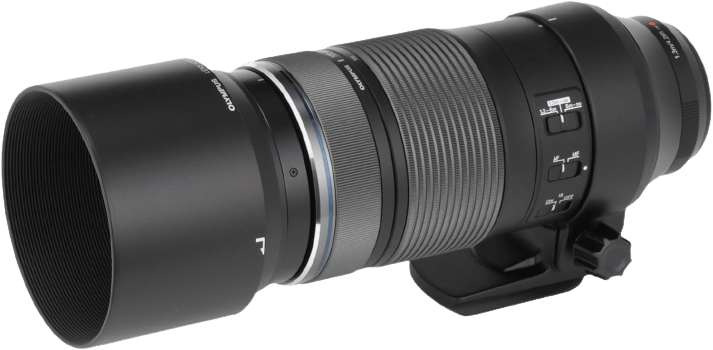The Sigma 150-600mm f/5-6.3 DG OS HSM is our top choice. It has a huge focal length and zoom range. And it’s the best value super-telephoto lens on the market. But our list also has branded options for Nikon, Canon, and Sony cameras. Our list of best lenses for wildlife photography has plenty of variety. [Note: ExpertPhotography is supported by readers. Product links on ExpertPhotography are referral links. If you use one of these and buy something, we make a little bit of money. Need more info? See how it all works here.]
The Best Lenses for Wildlife Photography
Here’s a quick look at our list of the best lenses for wildlife photography. Look at the awards to find out which lens suits you best.
10 Best Lenses for Wildlife Photography in Detail
Now we look at the best lenses for wildlife photography in detail. We go lens by lens. So you can find the perfect wildlife lens for your next photography expedition. All the major camera brands are covered. So you’ll be able to upgrade your wildlife photography lens. The Sigma 150-600mm f/5-6.3 DG OS HSM is the best super-telephoto lens from Sigma’s Contemporary line. You’ll struggle to find a lens with a focal length this size for a lower price. It’s the best-value wildlife lens on the market. But Sigma has made no compromise with quality. The HSM (Hyper Sonic Motor) offers fast and accurate autofocus. It has a large focal length to cover. But it does a good job of focusing before your subject disappears into the bush. It has strong optical performance on shorter focal lengths. There’s very little chromatic aberration or ghosting. But you might detect some distortion at the larger end of the zoom range. There is also extra flare reduction added to the build of this lens. This ensures good dynamic range in your images… even when working with strong backlight. The lens isn’t completely weatherproof. But the mount is dustproof and splashproof. You can take wildlife photos in tough conditions but proceed with care. The lens is also water and oil-repellent. That helps maintain image quality and makes the glass easier to clean. The Sigma 150-600mm Contemporary lens is the best-value super-telephoto lens on the market. It offers an excellent blend of quality and affordability. Add in the lightweight body, and it’s the best lens for wildlife photography. The Sigma 150-600mm f/5-6.3 DG OS HSM is available for Canon, Nikon, and Sony cameras. Make sure you buy the one that fits your camera. If you want to shoot wildlife photography with a Canon camera, the EF 100-400mm f/4.5-5.6 L IS II is your telephoto lens. The build quality and advanced features make it the ideal option for safari life. But it isn’t a budget telephoto lens. You’re paying for the highest Canon quality. The 100-400mm zoom range is perfect for wildlife photography. You can photograph everything… from small critters in temperate woodland to larger beasts on the African savanna. The 100mm end is perfect for wider environmental shots. And the 400mm end lets you capture intimate animal portraits. You don’t have to put yourself in danger. The optical image stabilizer is a godsend for wildlife photographers. It reduces the effect of camera shake, which is vital with longer focal lengths. It gives you four stops of image correction, allowing you to use slower shutter speeds. It’s good for low-light and long-distance wildlife photography. This telephoto lens uses Canon’s Ultrasonic Motor (USM) for autofocus. You’ll find the USM system in all of Canon’s latest lenses. It’s their quickest and most accurate autofocus (AF) system to date. And it works well with moving subjects like animals. Animal photographers will love the short-range minimum focus distance. You can focus on subjects as close as 3.3 ft (1 m). That’s ideal for wildlife portraits or even domestic animal photography. The EF mount is compatible with Canon’s full frame DSLR cameras. And you can also use it with APS-C DSLR Canon cameras. But it will have a 1.6x crop factor. The Nikon AF-S FX 200-500mm f/5.6 ED VR lens is perfect for long-distance wildlife photography. The 500mm focal length allows you to get close to animals without disturbing them. That means you won’t scare them off. And it helps you capture magical wildlife shots… without putting yourself on their menu! Some might find the 200mm minimum focal length restricting. But the tighter field of view is perfect for bird photography and wild animal portraits. All wildlife photographers will appreciate Nikon’s vibration reduction (VR) system. It maintains the sharpness of your images by reducing camera shake. And it allows you to shoot with slower shutter speeds, giving you 4.5 stops of compensation. The VR system makes up for the larger f/5.6 maximum aperture. The f/5.6 max aperture is constant throughout the zoom range. So you don’t lose natural light when using longer focal lengths. You can still shoot fabulous wildlife photography in fairly low-light situations. As an FX lens, it’s compatible with their full frame DSLR Nikon cameras. The 600mm max focal length gives you a huge level of magnification. It’s the perfect Sony lens for bird photography. And it’s an ideal choice for shooting in wide open spaces… like the African savanna or American prairies. This AF system is one of the top selling points of this super-telephoto lens. It uses Sony’s Direct Drive Super-sonic Motor (DDSSM) for fast and accurate focusing. It’s sharp and responsive even when shooting at dawn and dusk. The max aperture isn’t large, limiting you to f/6.3 when shooting at 600mm. But you can use the optical image stabilization system to compensate in low light. You get three different stabilization modes. And all three are useful for wildlife photography. This Sony lens uses an 11-blade aperture diaphragm. The extra blades give you a lovely bokeh effect. It adds smoothness to out-of-focus areas. This is a fantastic effect for bird photography. The Sony FE 200-600mm f/5.6-6.3 ED G OSS is the best lens for wildlife photography if you have a full frame Sony camera. This XF 100-400mm f/4.5-5.6R LM OIS WR is Fujifilm’s best lens for wildlife photography. It’s compatible with all X series Fujifilm cameras. And it has powerful magnification, image stabilization, and a durable build. The 400mm isn’t the longest on this list. But the power and quality of the magnification are excellent. You experience very little distortion throughout the zoom range. And it lets you capture animal photos from afar. The 100mm end also gives you plenty of shot variety. It allows for closer shots and environmental images. The Fujifilm image stabilization system is one of the best of any APS-C lens. It gives you five stops of compensation. You can shoot with a slower shutter speed without the risk of camera shake. You’ll have crisp, shake-free images even when shooting in low light. This telephoto lens can handle a wildlife photographer’s wet and rugged life. It’s dust-resistant. So you can shoot in deserts and dry plains. The water resistance means you don’t have to worry about wet or humid conditions. And you can use it in sub-zero temperatures for trips to the antarctic or arctic circle. There aren’t many places this lens can’t go! The Tamron SP 150-600mm f/5-6.3 Di VC USD is a fantastic option if you’re looking for your first telephoto lens. The features aren’t as advanced as some of the branded options. But the lens offers excellent value for money, especially for such a large zoom range. You can buy this model for Canon and Nikon cameras. The 600mm max focal length gives you fantastic reach. It’s ideal for shooting wildlife photography in large open spaces. You can capture intimate animal photos over great distances. And the tighter field of view looks great with bird photography. The Tamron lens uses a vibration compensation (VC) system to help keep your images sharp. It counteracts camera shake to give you blur-free images. This is really helpful when you’re shooting at the max focal length. And it allows you more freedom with your exposure settings. Wildlife photographers will love the Ultrasonic Silent Drive (USD) AF motor. It isn’t the quickest AF system in low light. But it is near-silent in operation. That means you won’t scare any animals away before you get the shot. It isn’t fully waterproof, so you must be careful in very bad weather. But the moisture-resistant construction does allow use in damp and humid environments. That’s good news for fans of jungle photography. And the 9-blade diaphragm gives you a smooth bokeh effect. The RF 100-500mm f/4.5-7.1L IS USM is the best wildlife photography lens for Canon full frame mirrorless cameras. It’s a high-performance super-telephoto zoom from Canon’s L series. The large zoom range is partnered with premium optical quality. And the advanced features make it a fantastic lens for wildlife photography. This lens features one of Canon’s finest optical image stabilization (OIS) systems. There are three OIS modes. There are standard, panning, and during-exposure-only modes. It gives you excellent creative options. And it allows you to capture stunning animal shots in different environments. It gives you five stops of shake correction, ensuring sharpness in all conditions. The dual-nano USM autofocus is fast and accurate. When focusing, it barely makes a noise so you won’t startle the animals. And the dual-motor makes it super-accurate with moving subjects like wild animals. The tough outer body protects the beautiful glass elements within. It’s dust-resistant for dry and sandy locations. And it’s water-resistant against rain and sea spray. You can capture incredible animal photos in any environment. The Nikon AF-P DX 70-300mm f/4.5-6.3 ED VR is the perfect lens for a beginner wildlife photographer. It’s compatible with Nikon’s excellent APS-C DSLR cameras. These include the Nikon D3500, D5600, and D500. It has a large focal length range with high-quality magnification. And there’s vibration reduction to keep your images sharp. Nikon’s DX lenses don’t have the larger focal lengths found in FX lenses. But a 70-300mm range is a fantastic place to start with a wildlife photography lens. The 300mm max focal length gets you closer to the animals without moving. And the 70mm end gives you wider shot options like environmental images. All wildlife photographers appreciate Nikon’s vibration reduction system. You activate it through the lens settings menu on your camera. And it reduces the effects of camera shake in your images. It allows you to shoot with a slower shutter speed. And it gives you sharper results in low-light conditions. It’s compact and lightweight for a wildlife photography lens. That means it won’t take up much space in your camera backpack. And the light weight allows you to shoot from hand without a tripod. The lens also offers fantastic value for this level of magnification. The Canon EF 70-300mm f/4-5.6 IS II USM offers great value. And it’s perfect if you’re looking for an entry-level wildlife photography lens. It’s compatible with Canon APS-C and full frame DSLR cameras. It’s more affordable than other Canon telephoto lenses for wildlife photography. But you still get fantastic image quality and reach. The 300mm focal length might leave you short if you’re shooting really long distances. But it still gives you the magnification to capture animals in the wild. You can shoot bird shots from your back door. Or you capture stunning animal shots in meadows or woodland. The 70mm focal length gives you more scope for landscapes or portraits of dogs. Image stabilization (IS) is always handy with longer focal lengths. And the IS system in this lens is perfect for animal photography. It gives you shake compensation of up to four shutter speed stops. That makes it easier to shoot handheld. And it allows you to shoot at dawn and dusk when there’s less light. The USM AF system works well for wildlife photography. It’s fast and accurate when shooting in daylight. And you can focus without making a sound. The lens won’t blow your cover when shooting in the bush. The Olympus ED 100-400mm f/5-6.3 IS is the wildlife photography lens you need if you have an Olympus camera. It’s an ED-mount lens compatible with all Micro Four Thirds (MFT) Olympus cameras. It’s the best magnification you can get for MFT cameras. And it has all the features you need for wildlife photography. The 100-400mm range gives you excellent shot options for wildlife photography. You have the magnification to shoot tight animal portraits from a long distance. And you can shoot wider shots and close-ups of smaller creatures like birds and insects. The optical image stabilization ensures your wildlife photos are crisp and clear. It gives you three stops of shutter speed compensation. This allows you to take handheld shots more often. And it gives you more freedom with your setting in low light. The autofocus is excellent for animal photography. It’s pinpoint accurate, especially in daylight. And the focus limiter gives you even quicker focusing times. We’re talking fractions of a second. And the focus switch makes it easy to flip between auto and manual focus. The lens’s body is compact and durable. It’s dustproof for expeditions in hot and dry climates. And it’s splashproof for wetter environments. The Olympus ED 100-400mm f/5-6.3 IS is an excellent travel companion for a wildlife photographer.
Conclusion
Wildlife photography is a demanding discipline. So you should find the best lenses for wildlife photography. They let you capture animals in their natural habitat. A large zoom range gives you the reach to get close without disturbing them. And features like fast autofocus and image stabilization ensure you get good-quality images. The Sigma 150-600mm f/5-6.3 DG OS HSM tops our list as the best lens for wildlife photography. It has powerful magnification but remains an affordable super-telephoto lens. It’s available for Nikon and Canon DSLR cameras. We’ve also recommended brand-specific Nikon and Canon wildlife lenses for wildlife photography. And you’ll find excellent options for Fujifilm, Sony, and Olympus. We hope you find the best wildlife lens, for whichever camera you use!
